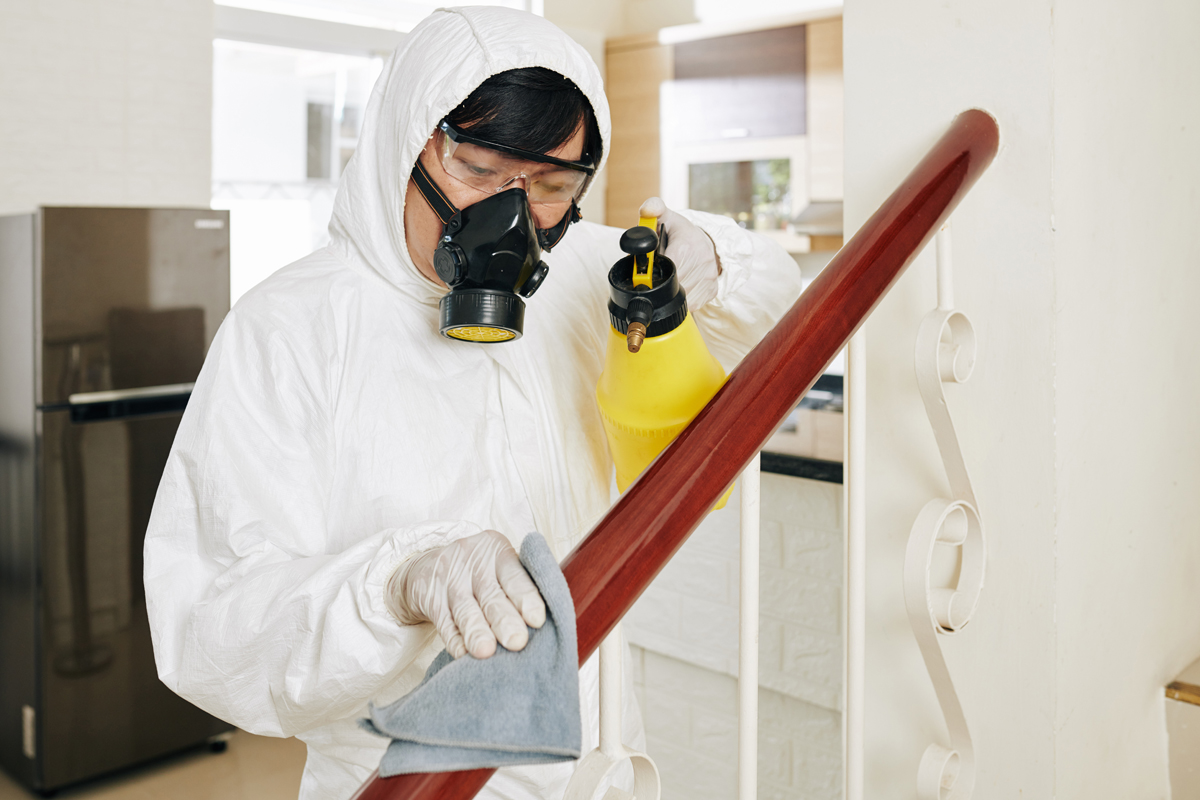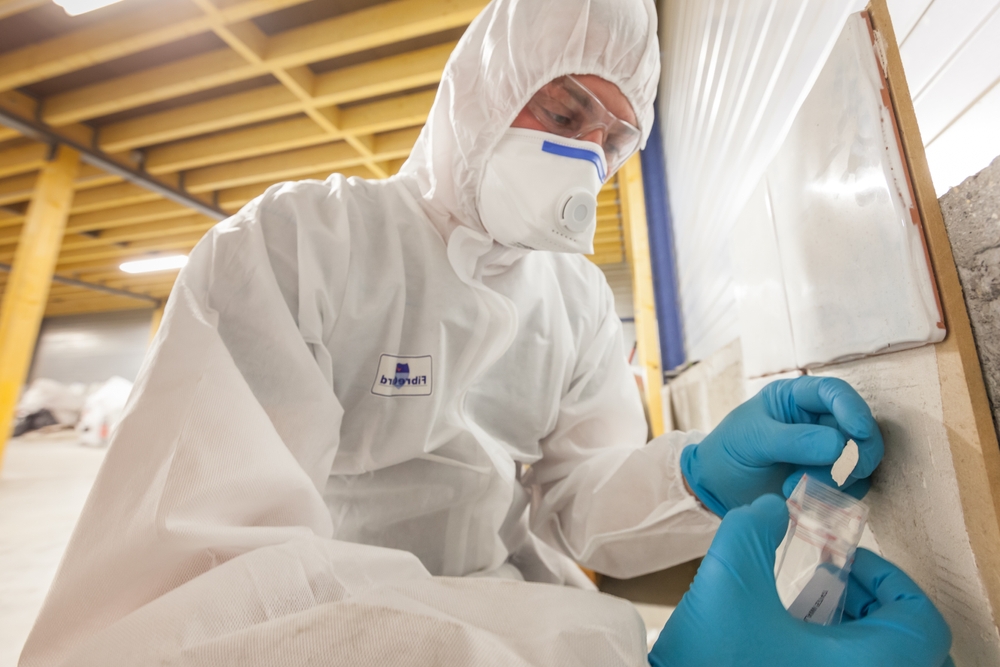Comprehensive Asbestos Testing: Reliable Services You Can Count On
Comprehensive Asbestos Testing: Reliable Services You Can Count On
Blog Article
The Complete Process of Accredited Asbestos Examining to Ensure Home Conformity
In the world of home monitoring and conformity, the process of accredited asbestos screening stands as a critical part to make certain the safety and well-being of passengers. Understanding the intricate actions entailed in this testing protocol is paramount for residential or commercial property owners and supervisors alike. From the first analysis to the last analysis of outcomes, each phase plays an essential function in identifying the existence of asbestos within a residential or commercial property. Let's check out just how this thorough procedure unravels to assure adherence to stringent policies and safeguard against potential carcinogen.
Accredited Asbestos Testing: First Assessment
In conducting the first evaluation for certified asbestos screening, a careful examination of the residential or commercial property's materials is necessary to accurately determine possible asbestos-containing products. This important step involves aesthetically examining all locations of the residential or commercial property, including ceilings, walls, flooring, insulation, and other building products that may nurture asbestos. Unique attention is offered to materials that are prone to harm or disturbance, as these situations can release dangerous asbestos fibers right into the air. In addition, sampling of believed products may be essential to confirm the visibility of asbestos via lab evaluation.
Certified asbestos assessors comply with rigorous protocols set by regulative bodies to ensure the accuracy and dependability of the screening procedure. By meticulously recording searchings for and making use of advanced screening approaches, assessors can offer home owners with a thorough report outlining the visibility of asbestos, if any, and the suggested actions for mitigation or elimination. This initial analysis establishes the structure for succeeding actions to attend to asbestos problems and ensure the security and conformity of the residential property.
Sample Collection Procedures for Asbestos Testing
Reliable sample collection procedures are vital in making certain exact asbestos screening outcomes and conformity with regulative requirements. When gathering examples for asbestos screening, it is important to follow rigorous protocols to minimize the risk of contamination and ensure the dependability of the results.
To start with, it is very important to identify the presumed asbestos-containing materials (ACMs) and focus on sampling locations based on variables such as the product's condition, access, and possibility for disturbance. Asbestos Testing. Examples should be collected from numerous areas within the home to provide a detailed analysis of asbestos presence
During sample collection, certified specialists must use suitable personal safety equipment (PPE) to guard versus asbestos direct exposure. They must utilize clean devices, such as disposable handwear covers and plastic bed linen, to stop cross-contamination in between examples. Examples should be very carefully accumulated using a defined technique, such as wet wiping or coring, and firmly sealed in airtight containers to maintain their stability throughout transport to the lab for analysis.
Lab Analysis Process for Asbestos Examples
Upon completion of the example collection procedure, the asbestos examples are meticulously delivered to accredited labs for meticulous analysis. At the laboratory, trained technicians deal with the samples with extreme treatment to prevent any type of cross-contamination or example degradation. The initial step in the research laboratory analysis process is example prep work, where the collected samples are carefully processed to draw out the asbestos fibers. Asbestos Testing. This action is essential to guarantee accurate cause the succeeding analysis.

Once the evaluation is complete, a detailed report is produced, detailing the findings and validating whether asbestos exists, the kind of asbestos fibers recognized, and the focus levels. This info is crucial for homeowner to take the essential actions to ensure compliance with asbestos policies and safeguard the wellness of residents.

Coverage and Analysis of Asbestos Test Results
Recognized asbestos screening research laboratories supply in-depth records that provide crucial understandings right into her response the visibility, type, and focus degrees of asbestos fibers discovered in samples accumulated from homes. These records you can check here are important for homeowner and supervisors to comprehend the danger posed by asbestos and make notified decisions regarding its management or removal. The records typically include details on the approaches made use of for screening, the places from which samples were taken, the type of asbestos identified (such as chrysotile, amosite, or crocidolite), and the concentration degrees of asbestos fibers found.
Analyzing these results needs know-how to examine the prospective wellness threats related to asbestos exposure, establish the suitable strategy, and ensure regulatory conformity (Asbestos Testing). Depending upon the searchings for, recommendations might range from proceeded surveillance and maintenance to encapsulation or complete asbestos reduction. Residential property proprietors should meticulously examine these records and talk to asbestos experts to develop a why not find out more thorough strategy for addressing any asbestos issues identified
Making Certain Residential Property Conformity With Asbestos Laws
To preserve adherence with asbestos guidelines, homeowner have to vigilantly implement steps to make certain compliance with appropriate laws and standards. This consists of conducting regular asbestos assessments by accredited professionals to identify any kind of visibility of asbestos-containing materials within the home. Once asbestos is identified, residential or commercial property owners have to adhere to asbestos administration plans that overview appropriate control, elimination, or encapsulation procedures to avoid direct exposure and spread of asbestos fibers. Conformity likewise includes keeping in-depth records of asbestos testing, maintenance, and removal tasks for inspection objectives.
Building owners need to give asbestos recognition training to staff members and owners to reduce the risk of asbestos direct exposure and guarantee appropriate handling of products that may consist of asbestos. Additionally, it is crucial to remain informed concerning any updates or modifications in asbestos policies to adjust administration methods as necessary. By proactively dealing with asbestos conformity demands, homeowner can create a risk-free atmosphere for residents and alleviate potential lawful and health risks connected with asbestos direct exposure.
Verdict
Finally, certified asbestos testing is an important procedure for guaranteeing residential or commercial property conformity with policies. The preliminary evaluation, sample collection procedures, laboratory evaluation, and interpretation of outcomes are all vital action in this process. By complying with these procedures, residential property owners can recognize and address any kind of asbestos hazards present, protecting the health and safety and security of occupants and keeping conformity with regulatory demands.
Report this page